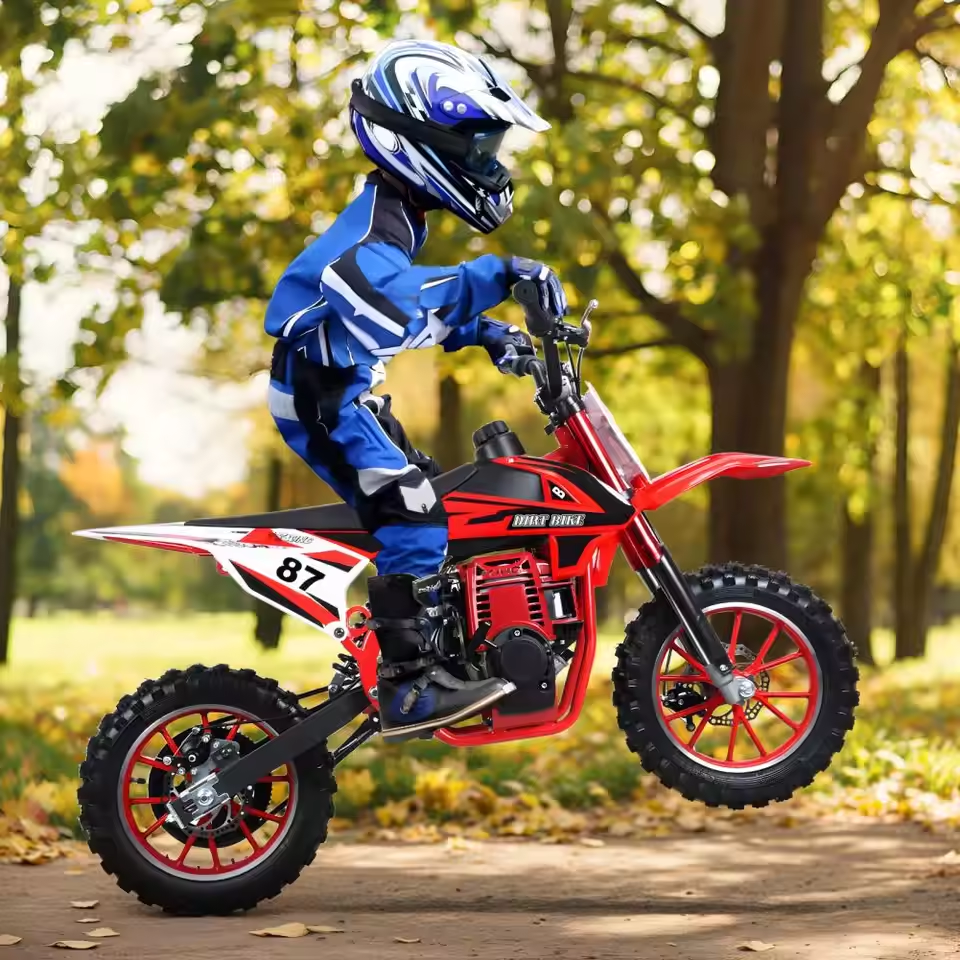Aug 20, 2025
Mini Motorcycle: Fun, Safe Rides for Kids and New Riders
What Is a Mini Motorcycle and Who Is It For?
A mini motorcycle is a compact, scaled-down version of a full-sized motorcycle, designed primarily for children and beginner riders. Featuring smaller engines—typically between 49cc and 110cc—lower seat heights, and reduced top speeds, it provides a safe and controlled way to experience the thrill of riding. Most models are built for off-road use, with rugged frames, suspension systems, and knobby tires that handle dirt, grass, and uneven terrain with ease. While commonly used by kids aged 6 to 14, mini motorcycles are also popular among teens and adults seeking a fun, entry-level ride for recreation or skill development.
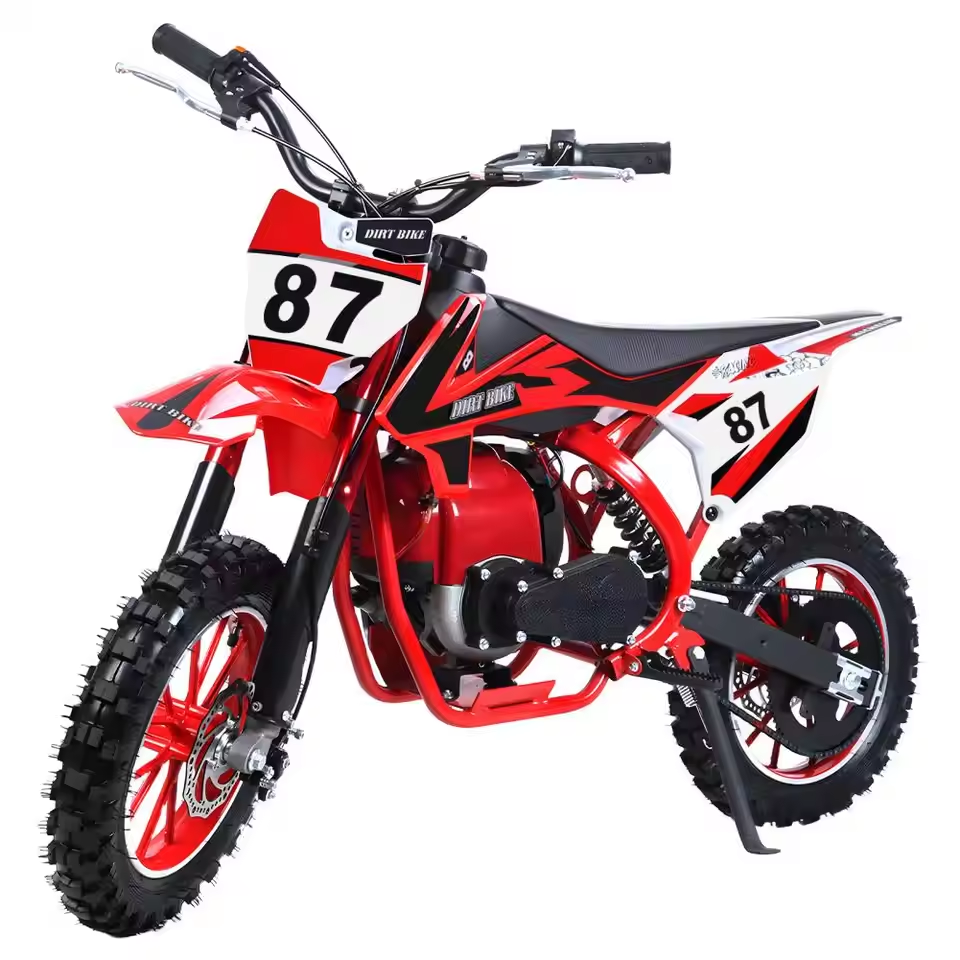
They’re frequently used in youth motocross programs, backyard practice, or family-friendly outdoor activities. Available in both gas-powered and electric versions, these bikes offer realistic handling and responsive controls that help riders build essential skills like balance, throttle management, and braking. Beyond entertainment, a mini motorcycle encourages physical activity, responsibility, and mechanical awareness. Whether as a first bike or a training tool, it serves as an exciting and practical introduction to the world of motorcycling.
Types of Mini Motorcycles: Gas, Electric, and More
Mini motorcycles come in several types, each suited to different riding styles, age groups, and environments. The two main categories are gas-powered and electric models, each offering unique benefits.
Gas-powered mini motorcycles are the traditional choice, often equipped with 2-stroke or 4-stroke engines ranging from 49cc to 110cc. These bikes deliver realistic engine noise, longer ride times, and higher speeds, making them ideal for off-road trails and youth motocross training. They require more maintenance—like oil changes and fuel mixing—but offer a true dirt bike experience.
Electric mini motorcycles, on the other hand, are growing in popularity due to their quiet operation and eco-friendly design. Powered by rechargeable lithium-ion batteries, they start with the push of a button and produce zero emissions. They’re perfect for younger riders or suburban areas with noise restrictions. While battery life limits ride time, charging is simple and upkeep is minimal.
Beyond power source, mini motorcycles vary in design. Off-road models feature knobby tires and suspension for rough terrain, while beginner bikes often have automatic transmissions and speed limiters. Some are even designed to grow with the rider, offering adjustable seats and progressive throttle controls.
Whether you want a rugged trail machine or a simple starter bike, there’s a mini motorcycle to match every need and skill level.
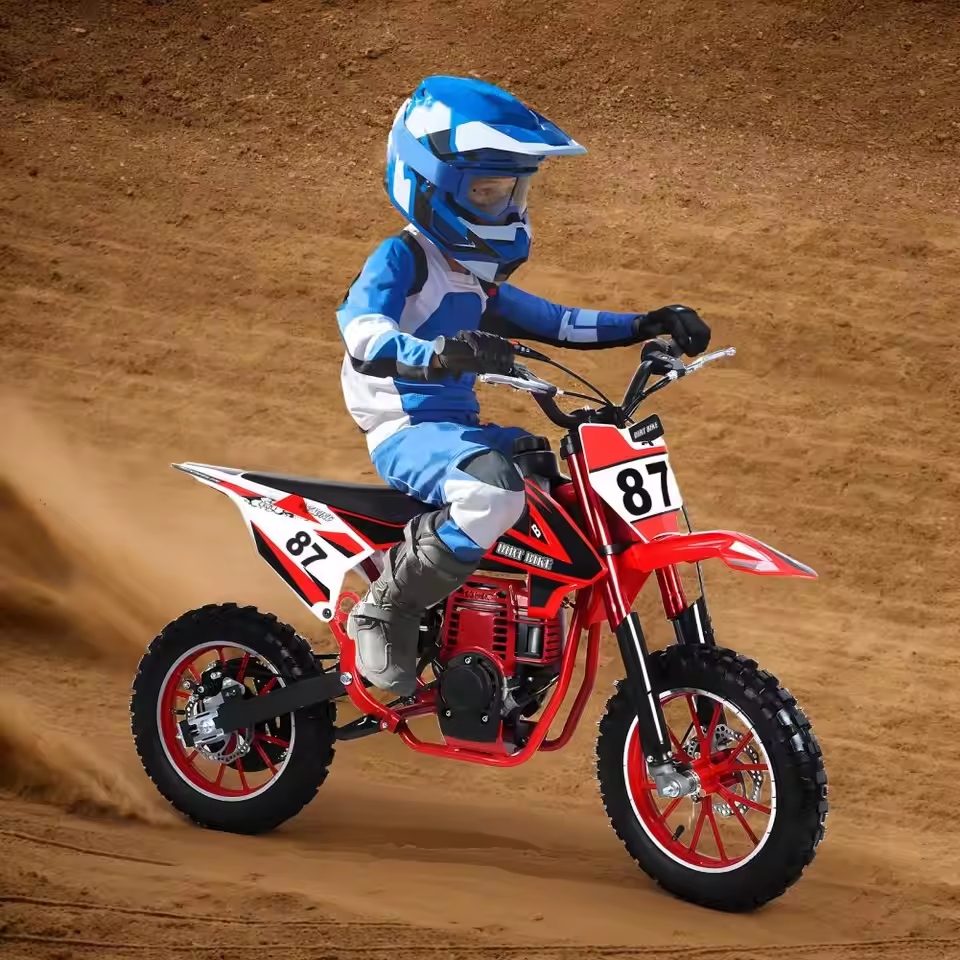
Top Safety Features to Look For
When choosing a mini motorcycle, safety should always come first—especially for young or inexperienced riders. Modern models come with several built-in features designed to reduce risk and ensure a more controlled riding experience. Here are the most important safety features to consider:
- Speed Limiter: This allows parents to cap the maximum speed based on the rider’s age and skill level. It’s essential for beginners, helping them build confidence gradually without overwhelming power.
- Kill Switch (Engine Cut-Off Switch): Located on the handlebars, this switch lets the rider or a nearby adult instantly shut off the engine in an emergency, preventing uncontrolled movement after a fall.
- Disc Brakes (Front and Rear): Superior to drum brakes, disc brakes offer quicker, more reliable stopping power, especially on wet or uneven surfaces—critical for maintaining control.
- Low Seat Height: Ensures the rider can place both feet firmly on the ground when stopped, improving balance and reducing the chance of tipping over.
- Automatic Transmission (No Clutch): Simplifies operation for young riders, allowing them to focus on steering and braking without managing a clutch lever.
- Protective Tether Switch (Rider-Operated Kill Cord): Attached to the rider’s clothing, this automatically stops the engine if the rider falls off, preventing the bike from running unattended.
- Durable Frame and Suspension: A strong steel or aluminum frame with functional suspension absorbs shocks and improves stability on rough terrain.
Always pair these features with proper safety gear—helmet, gloves, knee pads, and over-the-ankle boots—for maximum protection. Prioritizing these elements ensures a safer, more enjoyable ride every time.
How to Choose the Right Mini Motorcycle
Selecting the perfect mini motorcycle involves more than just looks—it’s about matching the bike to the rider’s needs and environment. Here are the key factors to consider:
- Rider’s Age and Size: Choose a bike with a seat height the rider can comfortably manage. Younger or shorter riders (ages 5–8) typically need models under 20 inches seat height, while older kids (10+) can handle 24 inches or more.
- Engine Type: Decide between gas-powered and electric. Gas models (49cc–110cc) offer longer ride times and realistic performance, ideal for off-road use. Electric mini motorcycles are quieter, cleaner, and easier to maintain—great for beginners and residential areas.
- Weight and Power: Lighter bikes are easier to control. Start with lower cc engines (49cc–70cc) for beginners; advance to higher cc as skills grow.
- Safety Features: Look for speed limiters, automatic transmissions (no clutch), disc brakes, and engine cut-off switches for added control and protection.
- Intended Terrain: For dirt, trails, or jumps, choose a model with suspension, knobby tires, and a durable frame. For paved surfaces or small yards, a simpler design may suffice.
- Adjustability: Some bikes offer adjustable seat heights, throttle limiters, or growing footrests—ideal for extending the bike’s usability as the child grows.
- Brand and Warranty: Stick with reputable brands that offer solid customer support, clear manuals, and reliable warranties.
By carefully evaluating these points, you’ll find a mini motorcycle that’s safe, enjoyable, and built to grow with the rider.
Maintenance Tips for Long-Lasting Performance
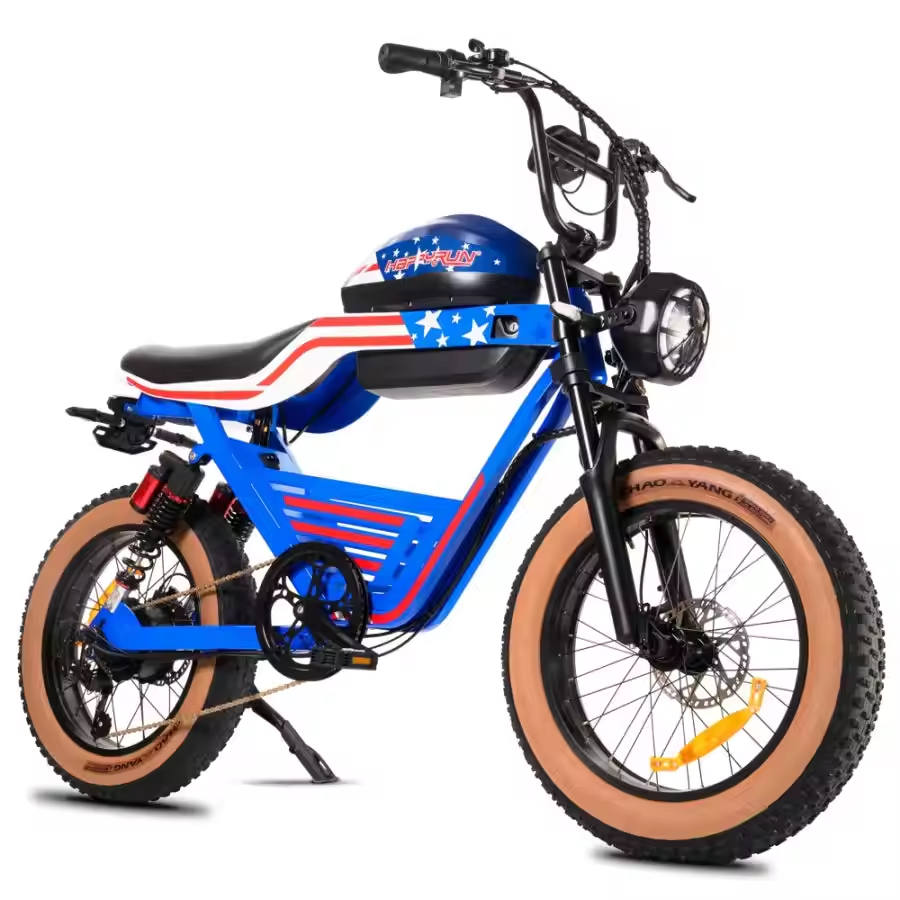
To ensure your mini motorcycle delivers reliable, safe, and high-performance rides for years, consistent maintenance is essential. Follow these key tips to keep it in top condition:
- Perform Pre-Ride Inspections: Before every use, check tire pressure, brake responsiveness, chain tension, and loose bolts. Identifying small issues early prevents costly repairs and accidents.
- Clean After Each Ride: Wipe down the frame with a damp cloth to remove dirt, mud, and debris—especially after off-road use. Built-up grime can lead to corrosion and damage over time.
- Change Oil Regularly (Gas Models): For gas-powered mini motorcycles, change the engine oil every 10–15 hours of riding. This keeps the engine running smoothly and prevents overheating.
- Maintain the Air Filter and Spark Plug: Clean or replace the air filter monthly, and inspect the spark plug every few months. A clogged filter or worn plug reduces performance and fuel efficiency.
- Care for the Chain: Lubricate the chain every few rides to prevent rust and ensure smooth power transfer. Also, check alignment and tension to avoid premature wear.
- Battery & Charging (Electric Models): Charge the battery fully after each use, avoid overcharging, and store it in a cool, dry place. Never let it fully drain—this extends battery life.
- Use Fuel Stabilizer (Gas Models): If storing the bike for more than 30 days, add fuel stabilizer to prevent carburetor clogs and fuel degradation.
- Store Properly: When not in use, keep your mini motorcycle under a breathable motorcycle cover to protect it from dust, moisture, UV rays, and temperature fluctuations.
By following these routine steps, your mini motorcycle will remain safe, efficient, and ready for adventure—season after season.
Where to Ride Your Mini Motorcycle Legally
Knowing where it’s legal and safe to ride a mini motorcycle is essential for avoiding fines and ensuring rider safety. In most regions, mini motorcycles are not street-legal and should never be ridden on public roads, sidewalks, or highways. Instead, they are designed for off-road use on private property—with the landowner’s permission—or at designated off-road parks, motocross tracks, and youth riding facilities. Many communities offer family-friendly riding zones or organized training programs where beginners can practice in a controlled, supervised environment.
Always check local laws and regulations, as rules vary widely by state or country regarding engine size, noise limits, safety gear, and where off-road vehicles are permitted. Some areas allow mini motorcycles on approved trails if they meet specific emission and noise standards. Avoid riding in public parks, neighborhoods, or restricted areas where it may pose a danger or violate ordinances. Choose open, flat areas free of traffic, pedestrians, and obstacles—like large backyards, empty fields, or dirt tracks. By riding responsibly and legally, you ensure a fun, safe experience for the rider and peace of mind for parents.
Parent’s Guide to Supervising First Rides
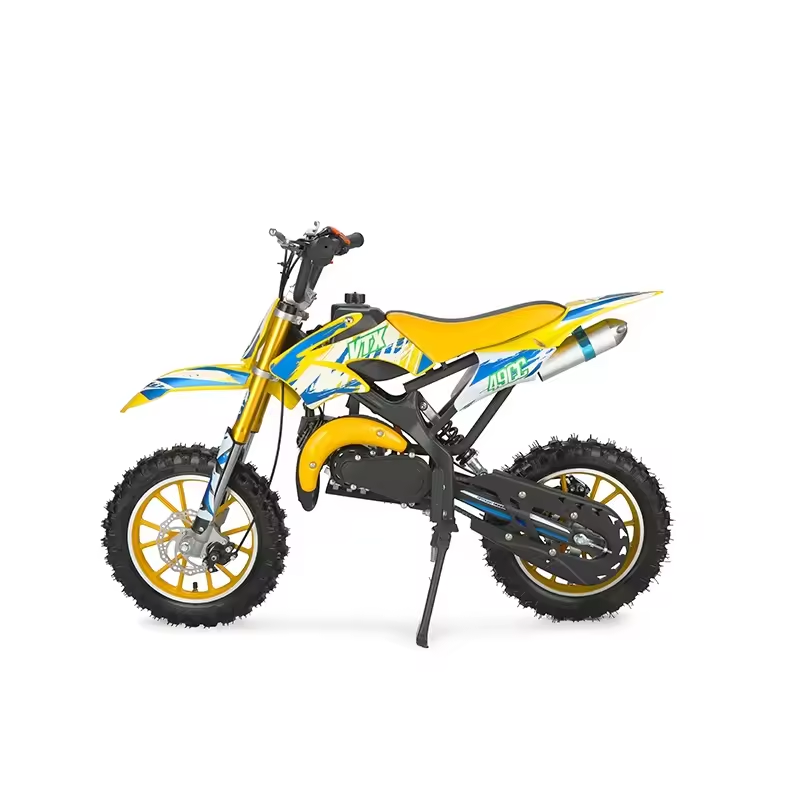
Introducing your child to their first mini motorcycle is an exciting milestone, but proper supervision is key to ensuring safety and building confidence. Start by creating a safe riding environment—choose a flat, open area like a backyard or empty parking lot, free from traffic, obstacles, and distractions.
- Teach the Basics First: Before starting the engine, go over all controls—throttle, brakes, kill switch—and explain how they work. Demonstrate proper starting and stopping techniques, and emphasize the importance of wearing full protective gear: a DOT-approved helmet, gloves, knee and elbow pads, and over-the-ankle boots.
- Stay Close and Stay Alert: Always supervise rides in person. Stand nearby so you can react quickly if the rider loses balance or panics. Keep younger riders on low-speed settings and avoid letting them ride alone, even on familiar terrain.
- Set Clear Rules: Establish simple, consistent rules such as no riding near roads, no stunts, and always asking permission before starting the bike. Reinforce safe habits from day one.
- Encourage Breaks and Feedback: Riding can be overwhelming at first. Allow frequent breaks and talk with your child about what they’re learning. Praise safe behavior and gently correct mistakes.
With patience, clear communication, and active involvement, you’ll help your child develop strong riding skills while keeping the experience fun, safe, and memorable.
Why a Mini Motorcycle Is a Smart First Ride
Choosing a mini motorcycle as a first ride offers countless benefits for young riders and their families. It’s more than just a fun outdoor toy—it’s a powerful tool for building confidence, coordination, and responsibility.
- Builds Real Riding Skills: A mini motorcycle mimics the controls and balance of full-sized bikes, helping riders learn throttle management, braking, steering, and body positioning. These foundational skills make transitioning to larger motorcycles much smoother in the future.
- Encourages Physical Activity and Focus: Unlike screen-based entertainment, riding requires physical engagement, sharp focus, and quick decision-making. It promotes balance, hand-eye coordination, and mental alertness in an exciting, hands-on way.
- Fosters Responsibility and Discipline: From pre-ride checks to post-ride cleaning and proper storage, maintaining a mini motorcycle teaches kids accountability. They learn the importance of safety gear, following rules, and caring for their equipment.
- Supports Outdoor Play and Family Bonding: Riding creates opportunities for outdoor adventures and shared experiences. Parents can supervise, cheer on progress, or even join in with off-road bikes of their own, strengthening family connections.
- Offers Long-Term Value: With proper care, a well-chosen mini motorcycle can last for years or be passed down to younger siblings. Its durability and adaptability make it a smart investment in both recreation and skill development.
In short, a mini motorcycle isn’t just about thrills—it’s a stepping stone to lifelong confidence, independence, and a passion for riding. That’s why it’s such a smart first ride.
More Details